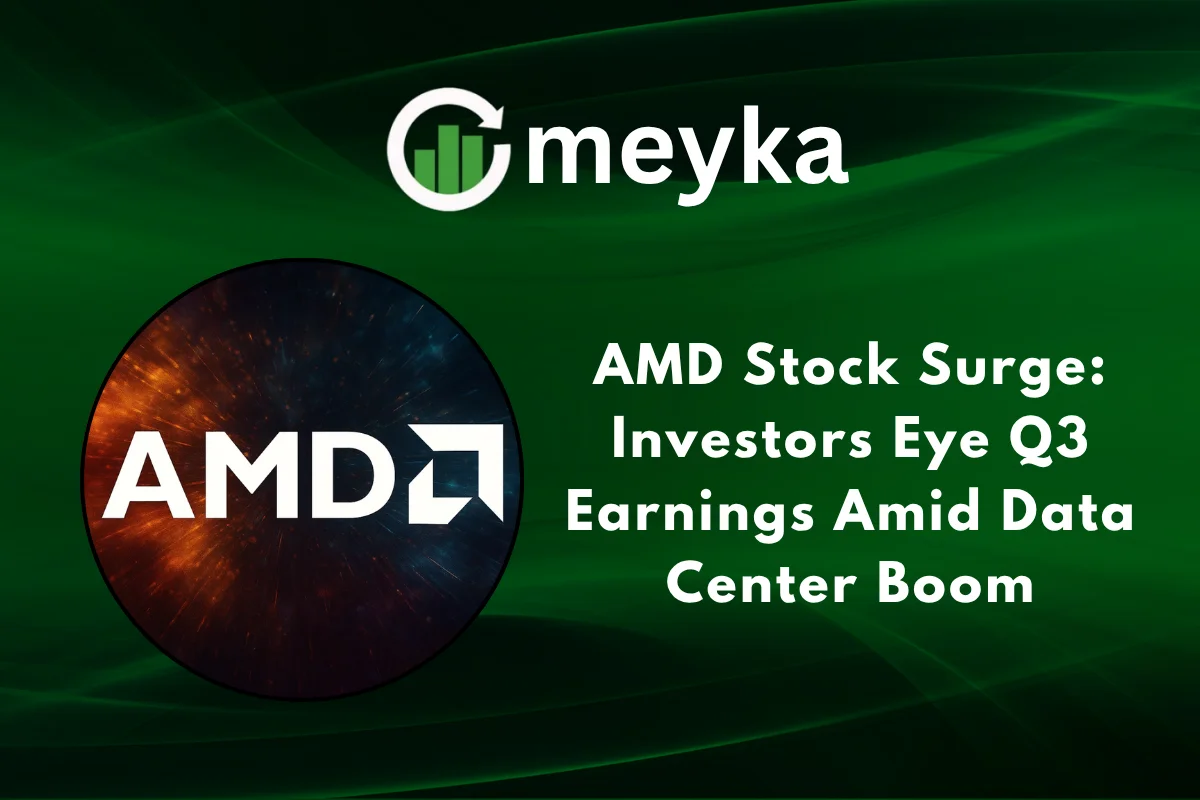AMD Stock Surge: Investors Eye Q3 Earnings Amid Data Center Boom
In recent weeks, AMD Stock Surge has grabbed headlines, driven by strong demand in data-center and artificial-intelligence infrastructure. Yet as the company approaches its third-quarter earnings release, early pre-market trading shows a slip in share price, signaling that investors are tempering expectations despite the upbeat backdrop.
This dichotomy, strong fundamentals on one side, market caution on the other, makes for a key moment in the broader stock market and for those doing deep stock research in the tech and AI-hardware space.
Pre-Market Slip: Cautious Mood Amid Big Hopes
While reports highlight an AMD stock surge over recent months, the pre-market shows a modest decline in the hours ahead of the company’s Q3 results. AMD was trading around $253 per share in pre-market activity, after earlier hitting highs near $260. The pullback reflects investor caution, even as AMD is riding AI demand and data-center growth; the market is asking: Can the company deliver?
The slip in pre-market trading is a reminder that while hype around AI stocks is strong, execution still matters. A misstep in guidance or margin outlook could erase gains quickly.
Why the AMD Stock Surge Has Built Momentum
There are several key drivers behind AMD’s recent positive momentum:
- AMD is projected to report quarterly revenue near $8.7 billion, representing about 28% year-over-year growth, with the data-center segment cited as a major growth engine.
- Analysts estimate that the data-center business alone may hit ~$4.18 billion in the quarter.
- The company’s new products, such as the Instinct MI350 series GPUs and EPYC server CPUs, are positioned to benefit from the boom in generative-AI infrastructure.
- For those tracking AI stocks, AMD is viewed as a compelling alternative to the dominant players, making it part of the technology growth narrative.
These factors together help explain why AMD’s stock surge has drawn attention from institutional and retail investors alike.
Yet, Why the Market Is Still Guarded
Even as the story looks promising, several caveats cause hesitation:
- The valuation appears rich. Some analysts say that while AMD stock surge is justified by growth, the premium valuations leave little margin for error.
- Export restrictions and supply-chain issues remain. For example, previous GPU shipments to China were impacted by U.S. export controls, which introduced risk to the data-center growth story.
- Guidance will matter even more than results. If AMD fails to maintain a strong outlook for margins or growth in the face of stiff competition (from the likes of NVDA and other chipmakers), then the pre-market slip could turn into a larger correction.
- The broader stock market is sensitive to macro risks; rising interest rates or weaker corporate spending could dampen the tech growth narrative.
In this context, the pre-market decline isn’t surprising; it’s investors pausing to see if AMD’s execution lives up to the hype.
What to Watch in Q3 Results and Beyond
Here are the key areas investors doing stock research on AMD should monitor when the earnings report drops:
- Data-Center Revenue and Product Roll-out – How much did the data-center segment grow? Did the MI350 series accelerate as expected?
- Margins and Free Cash Flow – Growth is good, but profitability counts. Executing at scale without margin deterioration is key.
- Guidance for Q4 and Beyond – What does AMD say about future growth, product launches, and supply-chain risks?
- Competitive Landscape – How well is AMD keeping up with rivals in AI hardware and server CPUs?
- Pre-Market Reaction – The pre-market slip suggests the market is sensitive; sudden changes in guidance or commentary could move the stock sharply.
The coming days will test whether the AMD stock surge has the staying power or if the market will recalibrate.
Broader Implications for Tech and AI Stocks
AMD’s story fits within a larger theme: the rise of AI stocks and the tech transition in the global economy. As data centers expand and AI workloads grow, hardware and infrastructure companies become more crucial than ever. Investors looking for growth are studying companies like AMD, but they also apply rigorous stock research to ensure the narrative is backed by fundamentals.
At the same time, the stock market is moving from a “growth at any cost” mindset to one where execution, margins, and cash flow matter more. That shift can create volatility for companies that were once labeled unstoppable.
Conclusion
The current pullback in pre-market trading shows that investors are being cautious. The market understands the strong story behind AMD, but is not ready to ignore the risks. The AMD stock surge narrative is still powerful. The company is benefiting from data center growth, rising AI infrastructure demand, and new product launches. However, the market now wants proof, not just potential. With Q3 earnings coming soon, AMD must show that it can turn high expectations into real, lasting performance.
For investors and analysts doing stock research, the watchwords now aren’t just growth, but execution, guidance, and resilience in a competitive tech landscape.
FAQs
The surge is driven by strong demand in its data-center segment, growth in AI hardware (such as the Instinct MI350 series), and rising expectations that AMD will capture more value in the AI and server market.
Because investors are cautious heading into earnings. A rich valuation means any weaker-than-expected guidance or margin miss could trigger a sharp reaction despite the positive narrative. The stock slip reflects that risk is front of mind.
AMD certainly offers exposure to the AI and infrastructure theme, but it comes with a higher risk due to valuation and execution demands. For long-term investors, it may fit alongside other high-growth companies, but careful stock research and risk assessment are essential.
Disclaimer:
The content shared by Meyka AI PTY LTD is solely for research and informational purposes. Meyka is not a financial advisory service, and the information provided should not be considered investment or trading advice.






